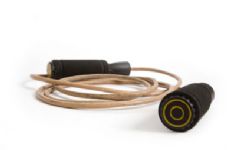|
Changing long-standing habits can be a pretty slow and difficult process. For most of us, at least, it’s not like we just decide one day to ditch all the junk food and super-sized portions, fall in love with steamed vegetables, and suddenly become an exercise maven after years of being a couch potato. Even the most sincere New Year’s resolutions don’t magically turn into lasting weight loss and a healthy lifestyle without some real effort to let go of old habits and practice new ones to take their place. The good news is that there are lots of things you can do to make these changes easier on yourself. One of the most important is to learn how to use rewards to keep yourself moving in the right direction. But there’s an art and a science to this business of using rewards effectively—you need to reward yourself for the right thing at the right time. The more you know about this, the easier it will be to pick good rewards and avoid some common mistakes. Rule No. 1. Reward your own behavior, not the scale’s. One of the most common mistakes people make when using rewards to help with weight loss is that they base the rewards on what the scale does--they give themselves a reward whenever their weight drops to a certain number on the scale. If the rewards are big or desirable enough, this may provide some incentive to keep working on weight loss, but it probably won’t make it much easier for you to change old habits and stick to new ones. For that, you need to reward yourself when you perform the specific behaviors that help you achieve your ultimate goal—things like staying in your calorie range for the day, sticking to your exercise plan, choosing certain foods instead of others, getting enough sleep, and so on. Maybe you’ve also got some even more specific goals or problem areas you’re trying to work on within each of these areas—like saying no to second helpings, cooking at home instead of heading for the nearest drive-thru, or adding a little more intensity to your exercise session. The best way to use rewards to improve results is to identify the particular actions or behaviors that lead to the overall result you want, and then reward yourself for doing those behaviors. The more specific the behavior, and the more frequent and consistent the reward, the more quickly you’ll “train” yourself to perform that behavior without so much conscious effort. Most people also find it helpful to start by rewarding small, incremental steps towards the ultimate change they’re trying to make, instead of trying to do everything at once or demanding perfection right from the beginning. If you set your reward up so you have to be perfect for a whole week or month or whatever to earn it, you can actually end up de-motivating yourself. What kind of reward is best, and when? There’s no theoretical right or wrong kind of reward. When it comes to modifying behavior, any reward that actually gets you to do what you need to do more often counts as an effective reward. It could be positive, like giving yourself something you enjoy, or it could involve letting yourself out of doing something you don’t like, like leaving the dishes for someone else to wash after you’ve cooked a healthy meal. It’s usually a good idea to make your reward consistent with the goal you’re trying to accomplish. For example, using some favorite food treat as a reward for sticking to your diet all week probably sends a pretty confusing message to your brain. And it’s also a good idea to choose rewards that don’t generate other stress or conflict in your life—for example, you don’t want to give yourself rewards that are so expensive they bust your budget or cause conflict with other family members. But other than some common sense considerations like these, the key is to choose rewards that actually work for you. What does matter, though, is the timing and frequency of the rewards. The evidence is pretty clear that you get the best results when the reward follows the desired behavior pretty quickly, and when you reward the behavior frequently and consistently until it becomes part of your normal routine. This does not mean you have to reward yourself immediately every single time you do the right thing. But it might mean, for example, that you’ll get better results (especially with behaviors that are hard for you to change) if you come up with an approach that includes smaller rewards delivered that same day, as well as larger rewards for making (and sustaining) improvements over longer periods of time. Putting It All Together Here’s an approach that illustrates how you can combine all these elements in a simple way. It usually works well for me. One of my goals this year is to kick a pretty bad diet soda habit I’ve developed over the past couple of years, by replacing the soda with plain water. I figured out that I can afford to spend one dollar per day (about the same as I’ve been spending on the soda) on rewarding myself for not drinking any soda, so at the beginning of each month, I put $30 in one dollar bills in a jar that’s labeled “Mine.” Alongside that jar, I have another empty jar. If I get through the day without having any soda, that day’s dollar stays in the “mine” jar; if I have some soda, I take a dollar out of that jar and put it in the other jar. At the end of the month, I get to spend all the money that’s still in the “mine” jar on whatever I want (right now, I’m saving up for a new pair of hiking boots). The money in the other jar gets spent on something or someone I’d really rather not spend my money on—last month, for example, I used it to buy a small birthday present for a noisy neighbor I don’t like very much. Obviously, you can adjust all the specifics in this kind of plan to suit your situation. For example, you can put more money in your “mine” jar on the first of each month if that motivates you more, or you can use something other than money. If you live (and share chores) with someone else, you could use “get out of doing the dishes” cards instead of dollars. Use your imagination. You can also have more than one behavior change you’re focusing on—just make sure you reward each one separately. Do you use rewards to keep yourself motivated? What works for you? |
Popular Entries
Related EntriesMore From SparkPeople |









.jpg)

.png)










.png)